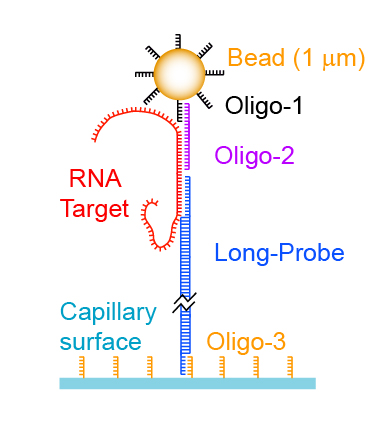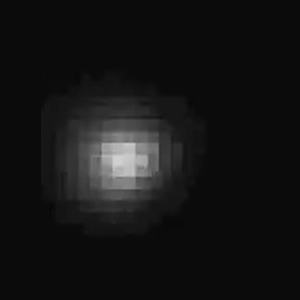SMOLT SINGLE MOLECULE DETECTION

SMOLT biosensor structure

Bead tethered by a single DNA Long Probe
The signal of SMOLT is generated by the displacement of micron-size beads tethered by DNA Long-probes that are between 1 and 7 microns long. The molecular extension of thousands of DNA probes is determined with sub-micron precision using a robust, rapid and low-cost optical approach.
